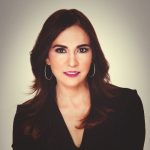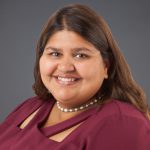As PRSA continues to make the organization and the profession more diverse and inclusive, achieving that goal depends, in large part, on increasing the number of multicultural students and young professionals in the field.
And that raises some questions, such as: How are classrooms moving diversity forward? How are we inspiring young people, who seem to be more socially conscious, diverse and open-minded, to become the next generation of PR leaders? And what are we doing to prepare those who are entering the PR workforce
David W. Brown, assistant professor of instruction at the Klein College of Media and Communication at Temple University; Vivian Dávila, APR, a graduate faculty member of Sacred Heart University in Puerto Rico; and Sheena McFarland, Ed.D, director of marketing and communications and adjunct instructor at the David Eccles School of Business at the University of Utah, shared their perspectives.
Begin with faculty.
According to Dávila, it starts with faculty taking time to recognize their own stereotypes and doing the work to change perspectives. Then, in the safe space created in the classroom, being fearless to guide the group discussion into discovering and analyzing implicit bias without judgment or condemnation.

Vivian Dávila, APR
“I think one of the most important parts of this is the faculty member recognizing and acknowledging that they, just like everyone, have implicit biases,” McFarland said. “Being open about the fact that all of us have it is a good first step.”
She advised that faculty members can use one of the many implicit bias tests/activities available online to understand what their own implicit biases are and work toward addressing them.
Brown said that not all faculty feel comfortable or equipped to lead these types of conversations, which is why he co-created a “Can We Really Talk” workshop that helped their faculty develop language around DE&I regardless of their academic focus.
“At the same time, it is OK for educators to acknowledge that they’re still figuring this out,” Brown said. “The alternative is not talking about it at all. It is OK to learn from our mistakes, and to teach each other when we do get it wrong.”
These educators explained that all of these efforts are good, but they should go hand in hand with better representation in faculty. The shift to virtual classrooms made diverse speakers and instructors more accessible to college faculty. This reinforces the need for better representation in faculty, but also public relations practitioners who often serve as adjunct faculty at colleges across the country.
Lay a solid foundation.
Nowadays, faculty are making diversity and inclusion in the classroom a priority with some prerequisites. At Temple, not only are DE&I in PR writing, news writing, and diversity and public relations classes required, they are also generating buzz. According to Brown, these have become “cool classes” and have attracted students from other majors.

Sheena McFarland
As a part of her course, McFarland engages students through the Privilege Bead Exercise. This exercise asks students to read a list of statements, and for every statement they can say yes to, they take a bead. Each bead represents a point of privilege.
The exercise allows her to talk with her students about privilege in a way that doesn’t feel attacking or accusatory. She consistently receives student feedback that this exercise was a favorite from the semester because it opened up students’ eyes to the bias and discrimination their peers face.
Create an inclusive classroom.
Dávila creates an inclusive virtual classroom the same way she teaches when face-to-face. “We must foster an environment of respect and empathy, where students feel safe to express their concerns, opinions and beliefs without being judged or canceled by the professor or any classmate,” she stated.
By establishing a secure space — whether in a classroom or online — she ensures that each student is heard, their feelings are acknowledged and that a wide array of views are built upon.
For McFarland, it’s about making sure everyone feels comfortable having a voice, and not just the same handful of students who raise their hands to answer. She usually employs tactics like Mentimeter interactions throughout class where students can share their thoughts anonymously. “I find that everyone in the class participates and shares, rather than just the few extroverts,” she explained.
Manage a diverse student population.
Creating an inclusive environment and managing a diverse student population go hand in hand. Dávila manages their diverse student population by seeing them all as equals, valuing each individual and not assigning any mental labels.
She believes that, in order to fulfill this generation’s learning needs, educators need to connect with students in a deeper way than ever. They must be open to learning from their social consciousness, which many people from her generation view as too sensitive and controversial.

David W. Brown
Brown sees a diverse student population, including international students, as a strength and something to be leaned into. He expects that diverse students might be more demanding so faculty should learn to be flexible and proactive, and not rely on old structures.
McFarland works to create an environment that is student-ready rather than expecting students to come to class campus-ready. She explained that some students might face huge barriers to come to class by balancing work or other life demands, or faulty technology.
She works to keep open communication with her students and offers time to speak one-on-one or invite students to office hours. She provides her slides ahead of class so students who want time to review them before class can do so, and records each lecture so that students are able to access the content upon request.
Teach real-time lessons.
Each of these three educators teach using actual case studies related to DE&I, and take the time to debate about current issues, exposing positive and negative examples of organizations handling of social issues.
Brown said he teaches off of the actual news cycle, something he was doing well before last year’s racial reckoning moment. For example, in April 2018, a Philadelphia Starbucks drew national outrage after two Black men waiting for an acquaintance were arrested. According to published reports, they hadn’t made a purchase and a store manager called police, who led the men out in handcuffs. Starbucks declined to prosecute.
Brown later gathered his students and discussed the incident from a PR perspective. Examples and discussions like these led him to develop the Diversity and Public Relations class which he taught for the first time last fall. It was a timely and powerful class that dealt with insights and emotions real-time.
From a practical perspective, students come to college with their own lived experiences. For many, it is their first opportunity to experience perspectives different from their own. By encouraging DE&I, these colleges also encourage empathy and connection with people and experiences that a student may not have had otherwise. It forces them to face bias and discrimination that exists in our systems and identify ways to combat or change it.
DE&I is a crucial aspect in developing future PR practitioners. As the guardian of the reputation for their prospective employer or clients, they will act as the organization’s conscience. They need to be ready to lead organizations into evolving values, culture and policies towards diversity, equity and inclusion.
Today’s PR student graduates must emerge from their college experiences prepared to drive change so that they can continue to shape the future.
Kecia Carroll is a communications strategist and corporate social responsibility adviser working with companies, nonprofits and communities needing both strategic and programmatic support. She serves at the Diversity & Inclusion Chair for PRSA’s Tampa Bay Chapter and is on the PRSA Diversity & Inclusion Committee.
[Photo credit: rawpixel]






